What is the history of Uttarakhand state?
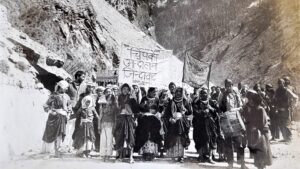
What is the history of Uttarakhand state? often referred to as the “Land of the Gods” due to its numerous religious sites and spectacular landscapes, has a rich history that dates back to ancient times. The region was historically a part of the Kuru and Panchala kingdoms, as mentioned in the ancient Indian epics, the Mahabharata and the Ramayana. Over the centuries, it witnessed the rise and fall of various dynasties and played a crucial role in the socio-cultural fabric of the Indian subcontinent.
During the medieval period, the Katyuri dynasty, followed by the Garhwal Kingdom and the Kumaon Kingdom, emerged as prominent powers in the region. These kingdoms were known for their cultural and architectural contributions, including the construction of temples and forts. The region was also a significant center for trade due to its strategic location along the trans-Himalayan trade routes.
In the 19th century, the British East India Company gradually expanded its influence in the Himalayan region. The territories of Garhwal and Kumaon came under British control after the Anglo-Nepalese War (1814–1815) and subsequent treaties with the Gorkha rulers. The British administration established the United Provinces of Agra and Oudh, which included parts of present-day Uttarakhand.
After India gained independence in 1947, the state of What is the history of Uttarakhand state? remained a part of the United Provinces. Over the years, demands for a separate state emerged due to geographical, cultural, and developmental reasons. The movement for Uttarakhand’s statehood gained momentum in the 1990s, culminating in the formation of the state of Uttarakhand on November 9, 2000.
Dehradun, one of the region’s prominent cities, was chosen as the interim capital. However, Gairsain, a town in Chamoli district, has been considered as a potential permanent capital to address regional imbalances.
Since its formation, What is the history of Uttarakhand state? has focused on sustainable development, tourism promotion, and preserving its ecological balance. The state continues to celebrate its cultural diversity, historical heritage, and natural beauty, making it a significant part of India’s historical and geographical tapestry.
In addition to its historical and geographical significance, What is the history of Uttarakhand state? has played a crucial role in India’s socio-political landscape. The state is known for its spiritual heritage, being home to the Char Dham Yatra, which includes the sacred pilgrimage sites of Yamunotri, Gangotri, Kedarnath, and Badrinath. These sites attract millions of pilgrims and tourists each year, contributing to the state’s cultural vibrancy and economic development.
What is the history of Uttarakhand state? has also been a hub for education and learning. The town of Nainital, for instance, has been a center for colonial-era schools and institutions. The Forest Research Institute in Dehradun is renowned for its contributions to forestry research.
The state’s topography, with its pristine rivers, dense forests, and high-altitude regions, has made it a center for adventure tourism. Rishikesh, often termed the “Yoga Capital of the World,” draws enthusiasts from across the globe to its ashrams and yoga centers. Additionally, places like Auli have become popular destinations for skiing and winter sports.
What is the history of Uttarakhand state? has faced challenges, including natural disasters such as the devastating floods in 2013. Efforts for environmental conservation, disaster management, and sustainable development have become critical aspects of governance in the state.
The cultural diversity of What is the history of Uttarakhand state? is reflected in its folk traditions, music, dance forms, and festivals. Various communities, including the Garhwali and Kumaoni people, contribute to the vibrant tapestry of the state’s cultural identity.
As What is the history of Uttarakhand state? continues to evolve, it grapples with the delicate balance between preserving its natural resources and promoting economic development. The state’s history, intertwined with spirituality, trade routes, and colonial influences, adds depth to its identity as a unique and significant part of India.
Uttarakhand’s history is deeply intertwined with its diverse communities, each contributing to the cultural mosaic of the state. The traditional art and craft forms, including Pahari paintings, wood carving, and handwoven textiles, showcase the craftsmanship and artistic expression of the local population.
The state has witnessed the evolution of local governance structures known as “Panchayats,” which play a crucial role in grassroots democracy. These institutions empower local communities to actively participate in decision-making processes, fostering a sense of self-governance.
Uttarakhand’s folklore and oral traditions add a layer of richness to its cultural heritage. Tales of bravery, love, and devotion are passed down through generations, contributing to a strong sense of identity among the people. Festivals like Holi, Diwali, and Harela are celebrated with enthusiasm, reflecting the cultural diversity and religious harmony in the region.
The state’s proximity to the Himalayas has also made it a significant center for spiritual practices and meditation. Besides Rishikesh, places like Haridwar and Gangotri hold immense religious importance. The Ganga Aarti performed at the ghats of Haridwar is a mesmerizing spectacle that attracts devotees and tourists alike.
Uttarakhand’s commitment to environmental conservation is evident in initiatives like the Chipko Movement, which originated in the state in the 1970s. This grassroots environmental movement, led predominantly by women, aimed to protect the region’s forests from deforestation.
In recent years, efforts have been made to promote sustainable tourism, emphasizing responsible travel practices and eco-friendly initiatives. The state’s biodiversity, including its national parks and wildlife sanctuaries, contributes to its ecological significance.
While embracing modern development, Uttarakhand continues to cherish and preserve its cultural roots. The state’s journey from the ancient kingdoms to a modern Indian state is a testament to its resilience, adaptability, and commitment to both tradition and progress. As Uttarakhand moves forward, it faces the challenge of maintaining this delicate balance for the benefit of its people and the generations to come.
Ancient Period (up to 600 AD)
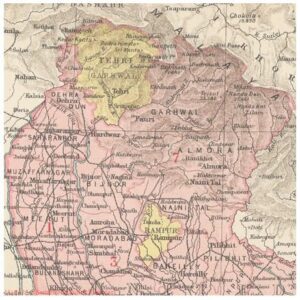
-
- The region now known as Uttarakhand has a history dating back to the Vedic period, with mentions in ancient Hindu scriptures.
- The region was part of the Kuru and later the Kedar kingdoms, as mentioned in the Mahabharata.
- During the ancient period, up to 600 AD, Uttarakhand, situated in northern India, held a significant place in the historical and cultural landscape of the Indian subcontinent. Referred to in Vedic scriptures as the land of the Kurus and Panchalas, this region played a role in the narratives of the Mahabharata and Ramayana.
- The tales of the Pandavas’ exile and Lord Rama’s connection with areas like Joshimath are embedded in the ancient history of Uttarakhand. While Buddhism and Jainism gained prominence across India during the 6th century BC, Uttarakhand’s role in these developments became more pronounced in subsequent centuries.
Early Medieval Period (600-1200 AD)
-
- The Katyuri dynasty, believed to be of Kirata origin, ruled parts of present-day Uttarakhand during this period.
- The region was also influenced by the Gupta and Harsha dynasties.
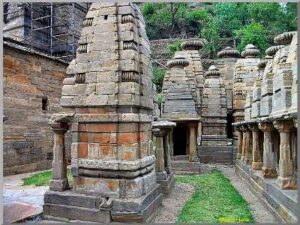
Early Medieval Period (600-1200 AD) What is the history of Uttarakhand - In the early medieval period (600-1200 AD), Uttarakhand continued to evolve as a region of cultural and historical significance in northern India. This era saw the rise of various dynasties that left an indelible mark on the landscape.
- The Katyuri dynasty, which had its stronghold in Kumaon, became a prominent ruling power during this period. They contributed to the architectural and cultural heritage of the region, leaving behind temples and inscriptions that reflect the socio-religious life of the time.
Medieval Period (1200-1800 AD)
-
- The Chand dynasty, which emerged in Kumaon, became prominent in the region during the medieval period.
- The Gorkhas, a Nepalese ethnic group, started expanding their influence in the western part of present-day Uttarakhand in the 18th century.
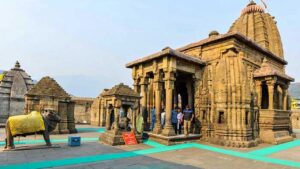
Medieval Period (1200-1800 AD) What is the history of Uttarakhand - During the medieval period (1200-1800 AD), Uttarakhand’s historical narrative continued to unfold with diverse cultural, political, and religious developments. This era witnessed the region being a part of the Delhi Sultanate and later the Mughal Empire, marking a phase of significant political influence.
- The Gadhwal and Kumaon regions emerged as principal centers of power, with local dynasties like the Gadhwal Kingdom and the Chand dynasty in Kumaon establishing their rule. These kingdoms not only engaged in territorial conflicts but also made significant contributions to the architectural and cultural heritage of Uttarakhand.
British Period (19th Century)
-
- The British East India Company gradually extended its control over the region during the early 19th century.
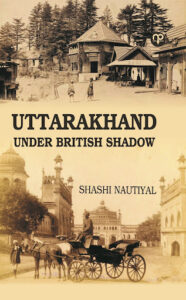
British Period (19th Century) What is the history of Uttarakhand - After the Anglo-Nepalese War (1814-1816), the British gained control of the western part of Uttarakhand, including Dehradun.
- The eastern part, including the Garhwal region, came under British influence through the Treaty of Sugauli.
- The 19th century marked a significant turning point in the history of Uttarakhand as the region came under British colonial influence. The British East India Company gradually extended its control over the territories of Gadhwal and Kumaon, formally annexing them in the early 19th century.
- The British administration introduced administrative reforms, altering the traditional structures of governance in the region. The hills of Uttarakhand, with their salubrious climate, attracted the British who established hill stations such as Nainital and Mussoorie for administrative and recreational purposes.
- The British East India Company gradually extended its control over the region during the early 19th century.
Post-Independence (20th Century)
-
- After India gained independence in 1947, the United Provinces were reorganized into the states of Uttar Pradesh and Uttarakhand remained a part of Uttar Pradesh
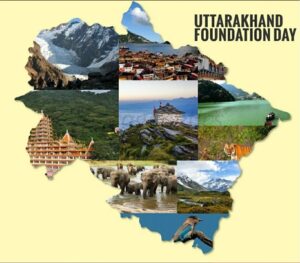
Post-Independence (20th Century) What is the history of Uttarakhand. - The demand for a separate state gained momentum, driven by cultural, geographical, and economic differences.
- On November 9, 2000, Uttarakhand was carved out of Uttar Pradesh as the 27th state of India.
- Post-independence, Uttarakhand emerged as a distinct entity within the Indian Union, attaining statehood on November 9, 2000. Prior to this, the region was part of the larger state of Uttar Pradesh.
- The demand for a separate state was fueled by various factors, including the unique cultural and geographical identity of the region, as well as aspirations for more focused development.
- After India gained independence in 1947, the United Provinces were reorganized into the states of Uttar Pradesh and Uttarakhand remained a part of Uttar Pradesh
Recent Years (21st Century)
-
- Uttarakhand has faced challenges, including natural disasters such as the devastating floods in 2013 that caused widespread destruction.
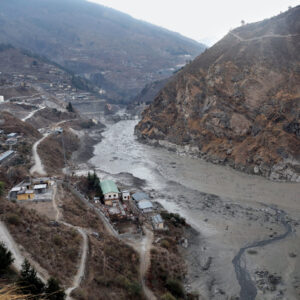
Recent Years (21st Century) What is the history of Uttarakhand - The state has been a popular destination for pilgrims due to its association with the Char Dham Yatra, which includes sacred Hindu sites like Badrinath, Kedarnath, Gangotri, and Yamunotri.
- In the 21st century, Uttarakhand has faced a mix of challenges and opportunities, reflecting the complexities of modern development and environmental conservation.
- The state, carved out in 2000, has seen continued efforts in infrastructure development, education, and tourism. However, it has grappled with environmental concerns, natural disasters, and the need for sustainable growth.
- Uttarakhand has faced challenges, including natural disasters such as the devastating floods in 2013 that caused widespread destruction.
1.What is oldest name of Uttarakhand
The region now known as Uttarakhand has had various names throughout history. One of the oldest names associated with the region is “Kedar Khand” or “Kedar Pradesh.” This name is rooted in Hindu mythology and is derived from the presence of significant Hindu pilgrimage sites in the region, particularly the revered Kedarnath Temple dedicated to Lord Shiva.
Over time, the region has been referred to by different names based on its geographical and historical significance. However, the name “Uttarakhand” itself is a relatively recent designation, officially adopted in the year 2000 when the state of Uttaranchal was renamed Uttarakhand upon achieving statehood. The name “Uttarakhand” translates to “Northern Land” or “Land of the North” in Sanskrit, reflecting its geographical location in the northern part of India.
2.Who wrote history of Uttarakhand?
- Badri Datt Pandey: Badri Datt Pandey was a renowned historian and scholar from Uttarakhand who made significant contributions to the study of the region’s history, culture, and folklore. He authored several books and articles on Uttarakhand’s history and traditions.
- Shiv Prasad Dabral: Shiv Prasad Dabral was another prominent historian from Uttarakhand known for his research and writings on the history and culture of the region. His works provide valuable insights into the socio-political developments and cultural heritage of Uttarakhand.
- Harikrishna Raturi: Harikrishna Raturi was a noted historian and writer who specialized in the history of Garhwal region of Uttarakhand. His works shed light on various aspects of Garhwali history, including the princely states, society, and culture.
- Dr. Yashodhar Mathpal: Dr. Yashodhar Mathpal was an archaeologist who conducted extensive research on the ancient history of Uttarakhand, particularly focusing on the rock art and archaeological sites in the region. His studies have contributed significantly to understanding the prehistoric period in Uttarakhand.
3.What is Uttarakhand state famous for?
- Himalayan Landscapes: Uttarakhand is renowned for its stunning Himalayan landscapes, which include snow-capped peaks, lush valleys, cascading rivers, and dense forests. The state is home to some of the highest peaks in India, including Nanda Devi, Trisul, and Kamet.
- Pilgrimage Sites: Uttarakhand is known as the “Land of the Gods” due to its numerous pilgrimage sites. It is home to the Char Dham pilgrimage circuit, which includes Yamunotri, Gangotri, Kedarnath, and Badrinath. Other significant pilgrimage destinations include Haridwar, Rishikesh, and Hemkund Sahib.
- Yoga and Wellness: Rishikesh, located in Uttarakhand, is renowned as the “Yoga Capital of the World.” It attracts spiritual seekers and yoga enthusiasts from around the globe who come to learn and practice yoga and meditation in its serene surroundings along the banks of the Ganges River.
- Adventure Tourism: Uttarakhand offers a wide range of adventure activities, including trekking, white-water rafting, skiing, paragliding, and mountaineering. Popular adventure destinations include Auli, Mussoorie, Chopta, and Jim Corbett National Park.
- Culture and Heritage: Uttarakhand has a rich cultural heritage with diverse traditions, languages, and folk art forms. The state’s indigenous communities, such as the Garhwalis and Kumaonis, have their own distinct cultural practices, music, dance, and festivals.
- Wildlife Sanctuaries and National Parks: Uttarakhand is home to several wildlife sanctuaries and national parks, including Jim Corbett National Park, Rajaji National Park, and Valley of Flowers National Park. These protected areas offer opportunities for wildlife viewing and nature exploration.
- Hill Stations: Uttarakhand boasts picturesque hill stations such as Nainital, Mussoorie, Almora, and Ranikhet, which offer panoramic views of the Himalayas and pleasant weather, making them popular tourist destinations, especially during the summer months.

